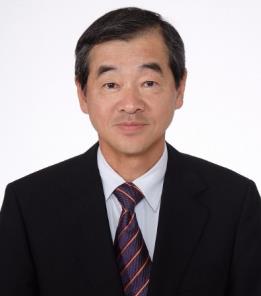
The 6th Global Conference on Polymer and Composite Materials (PCM 2019)


Biography: M. Akashi has been the Specially Appointed Professor of Osaka University since April 1st 2015, after his retirement of the Professor of Graduate School of Engineering, Osaka University at March 31st 2015. He received his PhD degree in Engineering from Osaka University in 1978. He was a post-doc at NIH, Gerontology Research Center (USA) and the University of Waterloo (Canada) in 1978-1980. He joined the Department of Applied Chemistry and Chemical Engineering, Faculty of Engineering, Kagoshima University as an assistant Professor in 1981. He was promoted to associate Professor in 1984 and a full professor in 1989. From 2003, he was a full Professor for the Department of Applied Chemistry, Graduate School of Engineering, Osaka University. He received the Award of the Society of Polymer Science, Japan in 1999 and the Award of Japanese Society for Biomaterials in 2004, and then the Award of the Chemical Society of Japan in 2015. His research interests cover design and synthesis of functional polymers and preparation of novel biomaterials, including synthesis of nanoparticles, gels, and so on. He has also started challenging unique researches on tissue engineering using layer-by-layer method since 2004.
Speech Title: How to challenge 3D-tissue engineering using polymer science
Abstract: The surface control of substrates with nano/micrometer-sized polymer films are of considerable interest for both fundamental and applied studies in the biomedical field because of the required surface properties. The layer-by-layer (LbL) technique was discovered in 1991 by Decher and co-workers for the fabrication of polymer multilayers constructed mainly through electrostatic interaction. We have extended the scope and applicability of this LbL assembly by introducing molecularly regular conformations of polymers by employing for the first time weak interactions, such as van der Waals interaction. By utilizing the characteristic feature, we have applied the LbL system for the template polymerization of stereoregular polymers, stereoregular control of surface biological properties, drastic morphological control of biodegradable nanomaterials, and rapid fabrication of stereocomplex using an inkjet printer.
The creation of artificial three-dimensional (3D) tissues possessing a similar structure and functions as natural tissue is a key challenge for implantable tissues in tissue engineering, and for model tissues in pharmaceutical assay. In 2007, we demonstrated a simple 3D-cell manipulation technique for the construction of hierarchically layered structures by the direct fabrication of a fibronectin (FN)-gelatin (G) nanofilm on the cell surface by LbL technique using affinity interaction between extracellular matrix proteins. Different from cell aggregation, such as spheroid, 3D tissue models constructed by LbL system based on polymer science, showed native tissue-mimetic structure and function. It is expected that LbL assembly using weak interactions will promote further interest into fundamental and applied studies on the design of surface chemistry in the biomedical field as to realize skin and heart models (LbL-3D Skin and LbL-3D Heart).